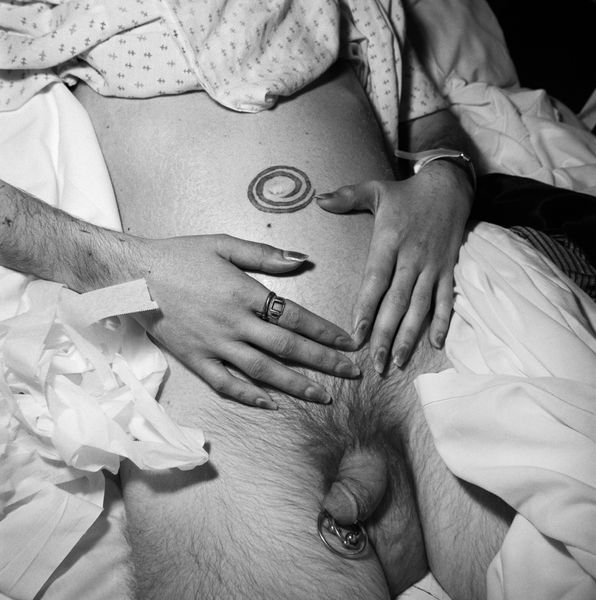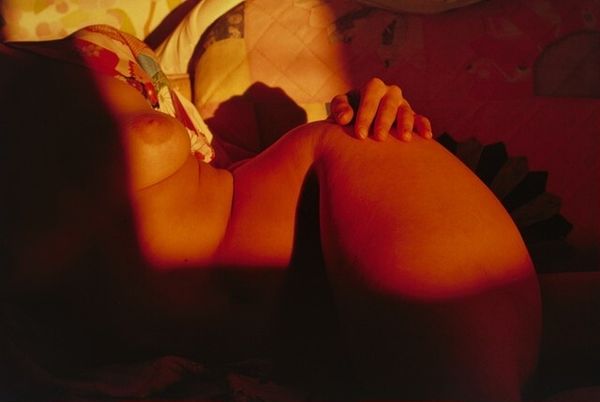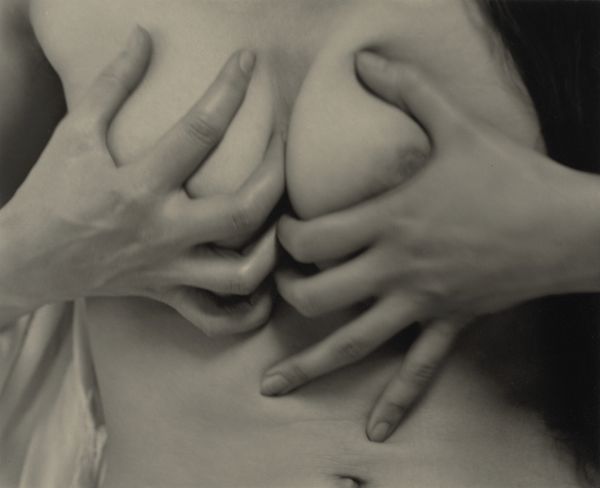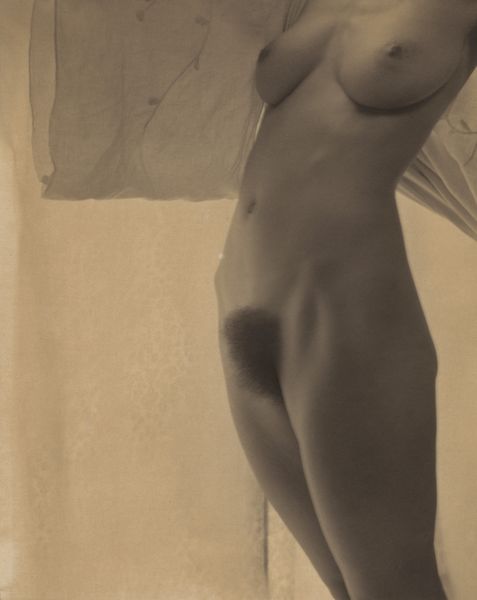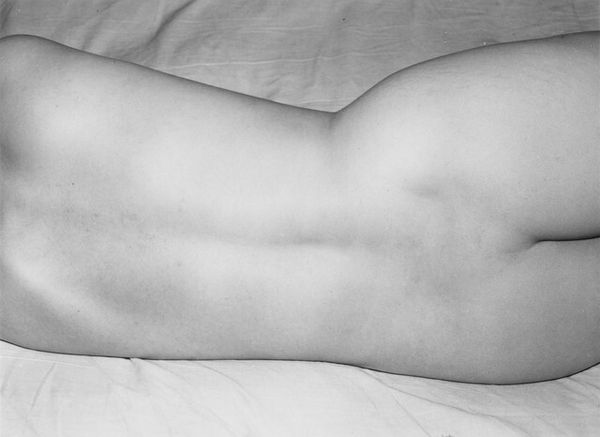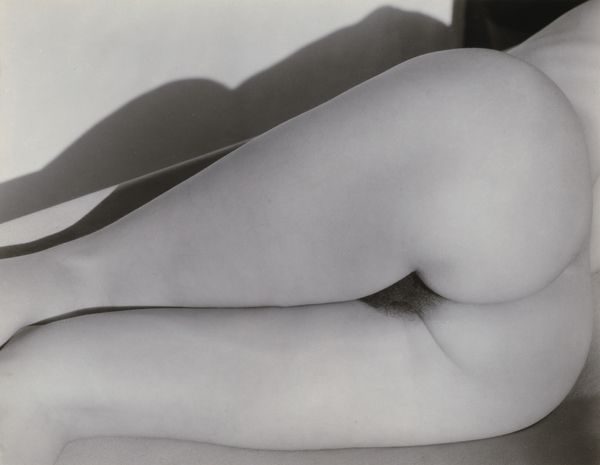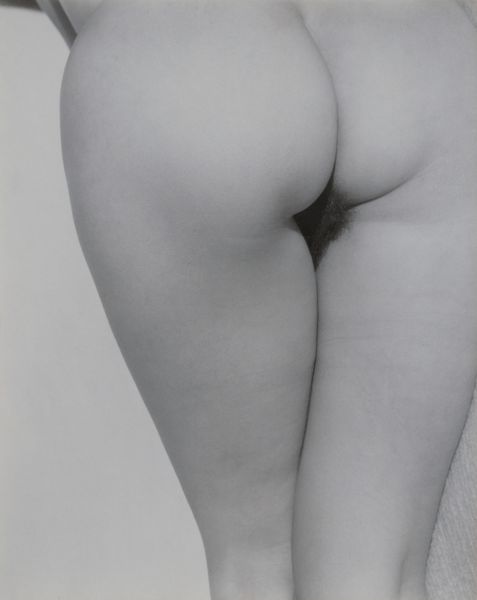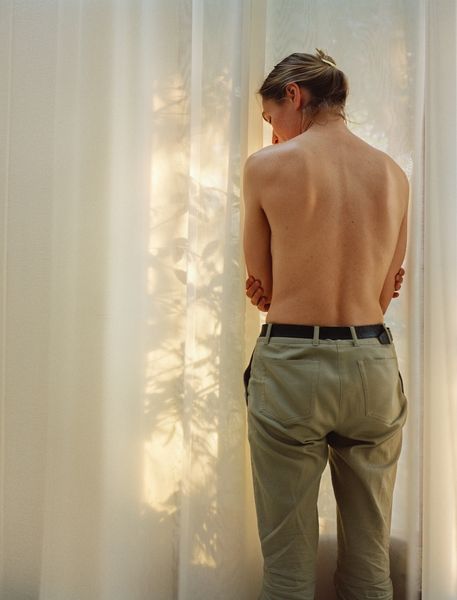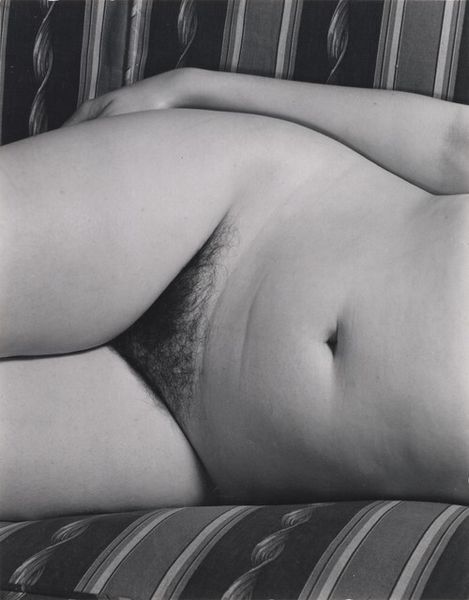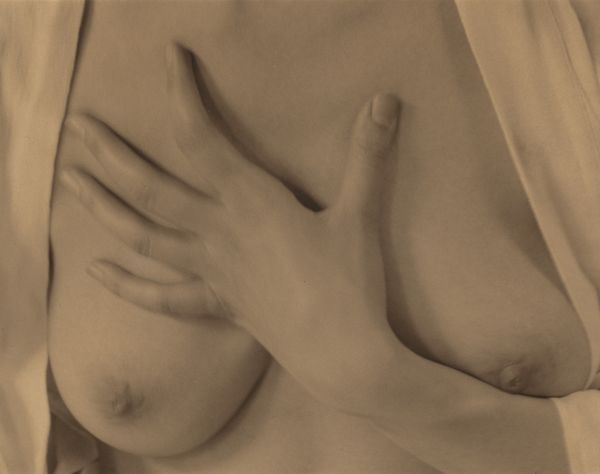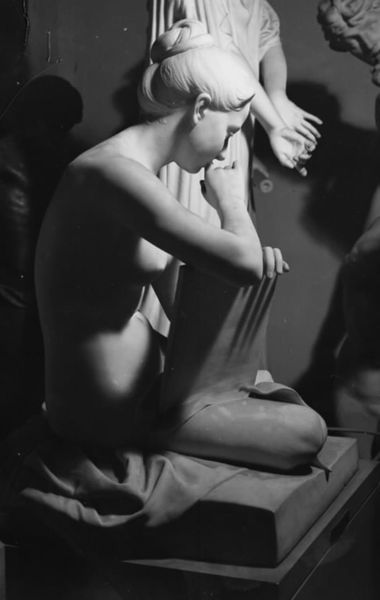
photography
portrait
street-photography
photography
black and white
monochrome photography
monochrome
nude
realism
monochrome
Dimensions: image: 80.01 × 80.01 cm (31 1/2 × 31 1/2 in.) sheet: 108.59 × 101.6 cm (42 3/4 × 40 in.)
Copyright: National Gallery of Art: CC0 1.0
Editor: This photograph, titled "New York," was created by Rosalind Solomon in 1987. It’s a stark black and white image. It evokes a sense of vulnerability, the figure seemingly exposed and passive. What underlying social commentary do you see in this piece? Curator: Solomon’s work often pushes boundaries, forcing us to confront uncomfortable truths about the body, intimacy, and power. In this photograph, the act of touch becomes central, and we must ask: who holds the power in this interaction? Is it an act of care, or does it highlight the potential for exploitation, a relevant issue in our culture, even more so, if you consider its sociohistorical background from the late 1980s during the HIV and AIDS pandemic? Editor: I hadn't considered the implications of power dynamics and the historical context. So, do you think the setting, a rather ordinary interior with a dated television set, contributes to that reading? Curator: Absolutely. The banal domestic setting juxtaposes the intimate, vulnerable moment, disrupting any idealized notions of care. Think about the gaze that Solomon, as a female photographer, brings to the image of the nude body, a gaze traditionally held by men. It's a deliberate subversion, forcing us to re-evaluate how we perceive and interpret these interactions. Also, I want to suggest questioning the notion of consent during a fraught era as was the AIDS epidemic. Editor: That's fascinating. It’s made me consider the intersection of gender, sexuality, and disease in a whole new way, rather than a traditional representation. Curator: Exactly! Solomon uses her lens to dissect complex social issues, encouraging critical reflection and disrupting conventional narratives surrounding identity and the body. Editor: I appreciate how you’ve placed this work within broader social and historical frameworks. Curator: And I find your perspective refreshing, especially the sensitivity with which you consider the artwork. It is an evolving dialogue we’re having, a conversation of change.
Comments
No comments
Be the first to comment and join the conversation on the ultimate creative platform.
